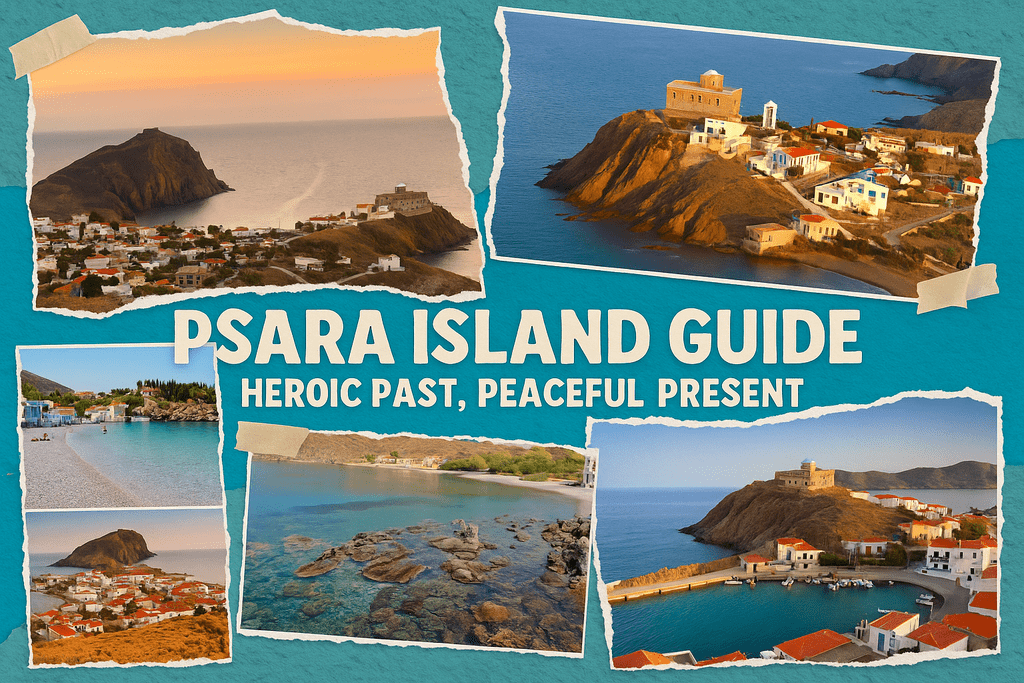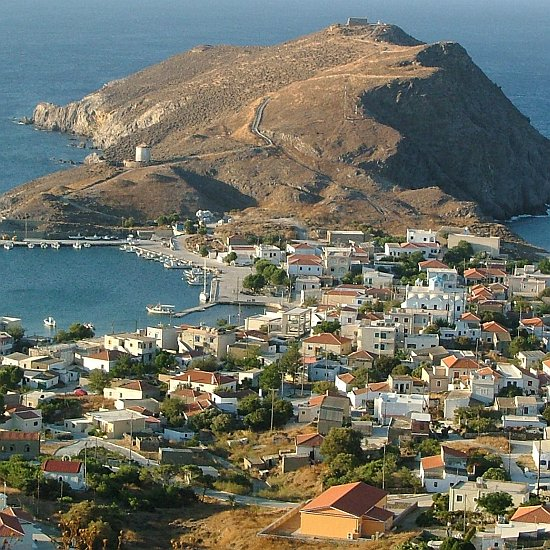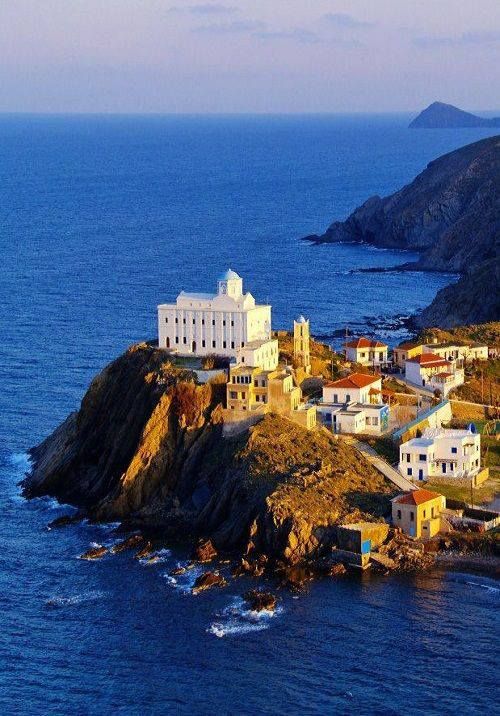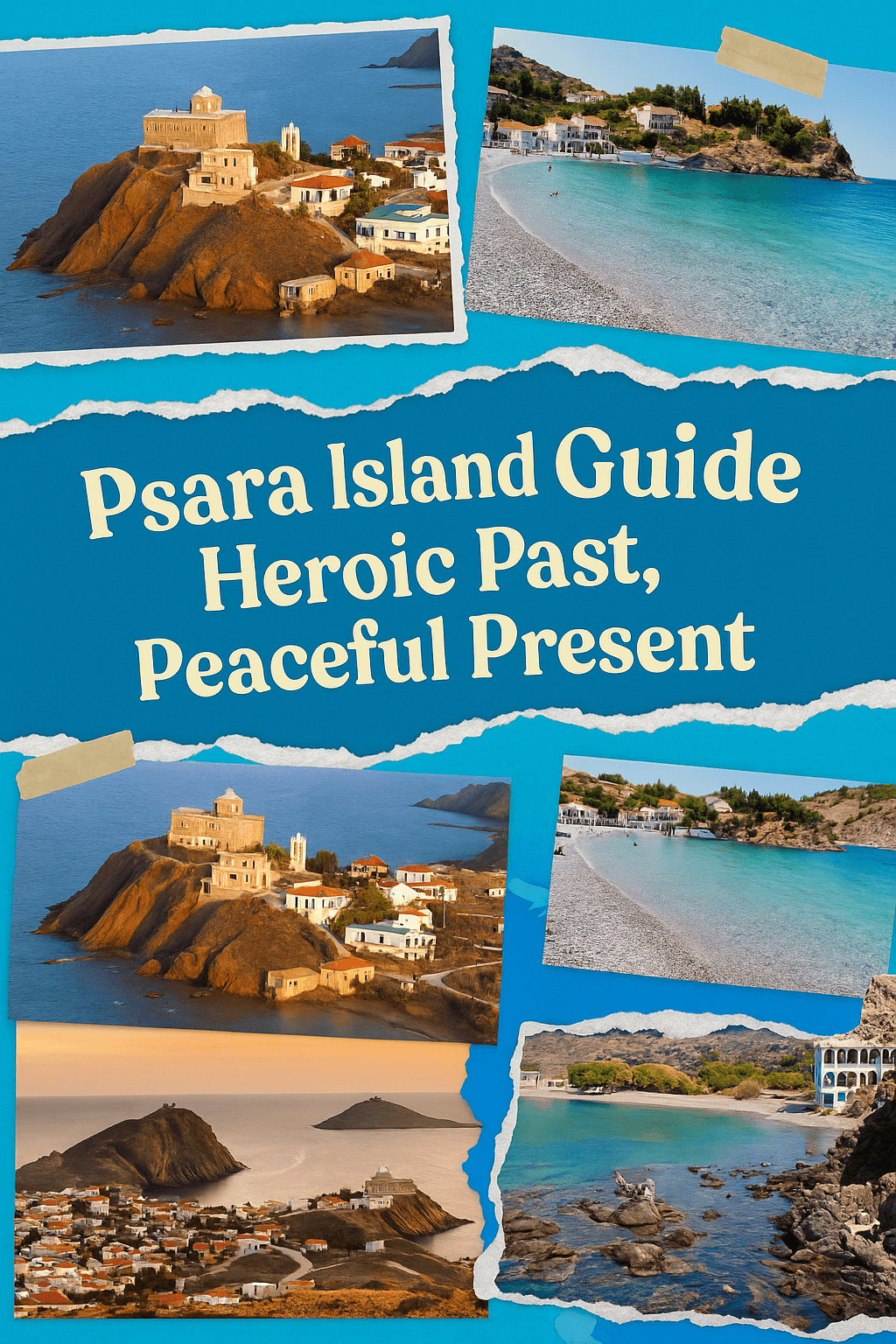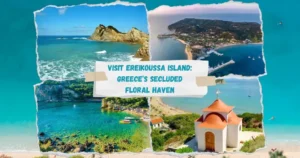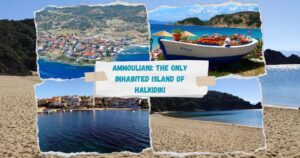Psara Island Guide: Heroic Past, Peaceful Present
Psara is not a name you’ll find in glossy travel magazines or mainstream Mediterranean cruise itineraries. Tucked away in the northeastern Aegean Sea, just west of the larger island of Chios, Psara (Ψαρά) is a quiet, windswept island with a population of fewer than 500 people. What it lacks in size, it more than compensates with its emotional gravity and layered identity.
This island is a place where the waves whisper stories of sacrifice, bravery, and rebirth. In modern times, it welcomes travelers seeking something beyond the crowded whitewashed alleys of Santorini or the cosmopolitan buzz of Mykonos. Psara invites you to slow down, listen, and connect—to the land, its history, and its resilient people. If you’re looking for a remote destination rich in meaning, surrounded by raw natural beauty, and unspoiled by mass tourism, Psara is your answer.
A Journey Through Psara’s Past
From Myth to Modernity
Psara’s history is a blend of myth and legacy. Ancient seafarers likely stopped here on their way across the Aegean, though archaeological evidence is sparse. What is certain is that by the 17th and 18th centuries, Psara had become a thriving naval hub, home to one of the strongest merchant and military fleets in Greece. This prosperity set the stage for the island’s defining moment in history: its pivotal role in the Greek War of Independence against the Ottoman Empire in the early 19th century.
The 1824 Catastrophe
No discussion of Psara can ignore the events of June 1824. In retaliation for the islanders’ fierce resistance and raids against Ottoman forces, the Turkish fleet attacked and annihilated Psara. Thousands were killed; others were sold into slavery. The event remains one of the most tragic episodes in the war, and it shaped the island’s legacy forever. A famous poem by Dionysios Solomos immortalized Psara’s fall, and even today, visitors sense a solemn reverence in the air. The destruction of Psara was not the end but rather a point of transformation. The few survivors rebuilt slowly and quietly, not seeking glory, but peace.
What Psara Offers Today
A Sanctuary of Peace and Simplicity
Modern Psara is peaceful and humble. There are no loud beach clubs, five-star hotels, or rows of souvenir shops. Instead, you’ll find honesty—whitewashed houses with blue shutters, elderly locals chatting outside the kafenion, fishing boats bobbing in the port, and a rugged coastline shaped by time and tide. Psara is the kind of place that doesn’t try to impress you; it just is. Life here moves at a rhythm dictated by the sea, the sun, and the seasons. That simplicity is its charm.
The Main Settlement: Psara Town
Psara’s only real town is its port—called simply Psara. It’s where you’ll arrive and where you’ll likely stay. The port is ringed by a few tavernas, a bakery, a mini market, and small guesthouses. The harbor itself is picturesque, especially at sunset when the sky turns gold and the fishing boats come in. The locals are warm and welcoming, eager to share their stories or recommend a beach, often in Greek but always with a smile.
Things to See and Do on Psara
Church of Agios Nikolaos
Standing tall above the town is the Church of Agios Nikolaos, the island’s most prominent religious site. It was rebuilt after the 1824 massacre and serves both as a place of worship and remembrance. The views from its courtyard are panoramic, stretching over the Aegean, and during sunset, the golden light against the church’s stone facade is particularly photogenic.
Heroes’ Monument and Psarian Fighters’ Memorial
At the edge of town stands a modest but emotionally charged monument to the fallen fighters of Psara. It’s not grand or imposing, but it carries weight. The monument looks out over the sea—the same sea that brought both prosperity and destruction to Psara. Visiting here is a quiet but powerful experience, especially if you take a moment to reflect on what the island has endured.
Archontiki Beach and Ancient Ruins
Just a short walk or drive from the port is Archontiki Beach, a peaceful bay with crystalline waters. What makes this spot special is the small archaeological site nearby—believed to be the remnants of an ancient settlement. Though not excavated in depth, it offers a glimpse into the island’s deeper past. Bring your snorkel; the underwater visibility is excellent.
Lazareta and Monastery of the Dormition
A few kilometers inland is the old quarantine station known as Lazareta and nearby, the Monastery of the Dormition (Koimisis Theotokou). The monastery is simple but historically significant—it served as a refuge during wartime and still holds annual religious celebrations that attract diaspora Psarians. It’s a good walk from town and gives you a feel for the island’s inner landscape—arid, windswept, yet striking in its stillness.
Hiking and Nature
Psara is ideal for hiking, especially for those who enjoy solitude and silence. The terrain is rocky, with scattered low vegetation, and in spring, wildflowers dot the hillsides. A favorite route is from the port to the lighthouse at the island’s northern tip. The views are astonishing—just blue sea and sky for miles. You’re unlikely to see another soul along the way, but bring water and good shoes; the sun can be intense, and the trails are unmarked.
Practical Travel Guide to Psara
How to Get There
Psara has no airport. You reach it by ferry, typically from Chios Island, which in turn is accessible by air from Athens or Thessaloniki. The ferry ride from Chios takes about 2.5 to 3 hours, depending on sea conditions. There’s also an occasional ferry from Piraeus, but it’s infrequent and takes up to 8 hours. Always check schedules in advance, as weather and low demand can alter sailings without much notice.
Where to Stay
Accommodation options are limited but comfortable. Think guesthouses, small family-run hotels, and rental rooms. Expect basic amenities: clean sheets, hot water, and friendly hosts. Prices range from €35 to €70 per night depending on season. Book early if you plan to visit in August or during the island’s main religious festival on August 15th.
What to Eat
Food on Psara is a delight for anyone who appreciates traditional Greek island cuisine. Fresh seafood is abundant—grilled octopus, fried calamari, and red mullet are common dishes. Psarian fava (a type of yellow split pea mash) and local cheeses are must-tries. Tavernas around the port serve generous portions at reasonable prices. Expect to pay around €10–15 per person for a meal including wine. Don’t miss the homemade desserts—especially spoon sweets made from local fruit.
What to Pack
The island’s climate is typically dry and sunny from May to September. Bring lightweight clothes, sun protection (hat, sunglasses, high-SPF sunscreen), and sturdy walking shoes if you plan to hike. Evenings can get breezy, so pack a light jacket. In cooler months, bring windproof layers. There are no ATMs on the island, so carry cash. A power bank and some books or offline entertainment are also good ideas, as mobile signal and internet can be patchy.
Language and Communication
Most locals speak Greek, and while English is understood in guesthouses and tavernas, don’t expect fluent conversations. Learning a few Greek phrases goes a long way here and is deeply appreciated. Wi-Fi is available in some accommodations, but don’t rely on it for work or streaming. Psara invites disconnection—in the best sense of the word.
Best Time to Visit Psara
Seasonal Highlights
Spring (April–June) is ideal for nature lovers. Wildflowers bloom, and the weather is mild. Summer (July–August) brings heat and more visitors, though Psara never feels crowded. The Assumption Day celebration on August 15th is the island’s biggest event, drawing back expats and families for religious ceremonies, music, and feasting. Autumn (September–October) is perfect for swimming and hiking in cooler weather. Winter is very quiet and not ideal for casual tourists, as many services shut down.
Why Visit Psara?
More Than a Vacation
To visit Psara is to step into a living memorial. It’s not just a beach destination—it’s a place where history is etched into every stone, and silence speaks volumes. It’s about walking the same paths as the island’s heroes, swimming in clear waters that once carried the hopes and sorrows of a nation, and being part of a community, even briefly, that has endured and remained.
Who Will Love Psara?
Psara is not for everyone. It’s not a party island or a luxury escape. It’s for travelers who seek meaning, quiet, and a connection to place. Writers, solo travelers, history enthusiasts, and couples looking for serene romance will find something special here. It’s also perfect for Greeks and diaspora travelers who want to reconnect with the roots of the nation’s struggle and resilience.
Final Thoughts: An Island That Stays With You
Long after you leave Psara, the island lingers in memory—not with flashy images but with quiet moments: the sound of wind in the hills, the taste of sun-dried tomatoes on warm bread, the gaze of a fisherman who’s seen more than he’ll ever say. It’s not a place that shouts. It whispers. And those who listen, never forget.
Images via: Pinterest

